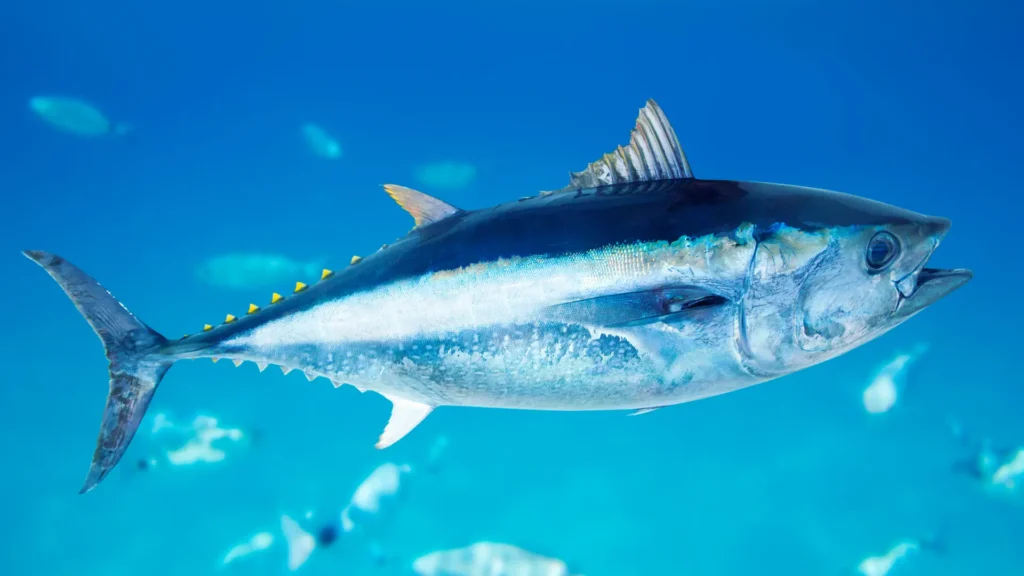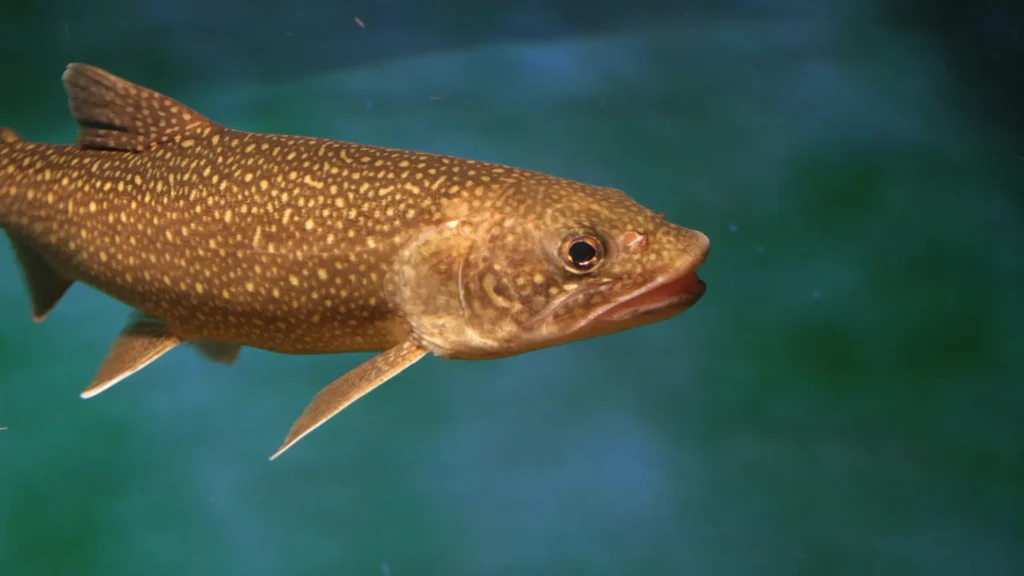Catfish have diverse feeding habits influenced by size, age, and habitat. They are opportunistic feeders, consuming a variety of organisms like insects, mollusks, crustaceans, and other fish. Younger catfish rely on insects and small invertebrates, while mature catfish incorporate fish and crayfish into their diet as they age.
Some catfish species, like the wood-eating catfish, are known for their ability to digest wood by relying on gut microorganisms to break down cellulose. This showcases catfish’s adaptability to different environments and their important role in aquatic ecosystems.
In this blog post, we will delve deeper into the fascinating feeding habits of catfish, explore their various food sources, and examine their unique feeding strategies in detail.
Feeding Habits of Catfish
Catfish have varied feeding habits shaped by their natural environments. Contrary to popular belief, they don’t just feed at the bottom of rivers. They actively forage by searching the riverbed or skimming the water for bigger prey.
Wild catfish display a wide range of feeding behaviors, from scavenging to devouring entire fish. They have diverse dietary preferences, including carnivorous, herbivorous, and omnivorous tendencies. Additionally, catfish engage in limnivory, where they consume microorganisms found in mud.
Young catfish mainly feed on larvae and insects for growth. As they mature, their diet expands to include various food sources such as insects, snails, other fish, and fish eggs. Different catfish species exhibit specific dietary preferences, including wood, algae, or a parasitic lifestyle relying on the blood of other animals.
Aquarium catfish have different feeding habits than wild catfish. They eat algae and decaying matter in the tank, but need extra food for optimal health. It’s important to give them a balanced and nutritious diet, like other pet fish.
Catfish Barbels and Taste Buds
The adult catfish has numerous external taste buds on its barbels, which are conical elevations protruding from the surface. Scanning electron microscopy reveals that all observed taste buds are of the same type. The taste buds has nerve terminals at their base and contain elongated cells with microvilli in their central pore.
There are two populations of these cells, with the smaller microvilli outnumbering the larger ones. Some taste buds also have basal cells without apical microvilli. The implications of these findings are discussed.
Food Sources for Catfish
Catfish are known for their versatile feeding habits. As primarily omnivorous bottom feeders, they have a diverse diet that ensures their survival in various ecosystems. These nocturnal creatures exhibit a preference for foraging at night, which adds to their mystique.
Catfish have diverse feeding habits, consuming a wide range of food items. They rely on aquatic plants, seeds, and fish of various sizes for essential nutrients. Mollusks like snails, clams, and mussels are also on their menu. Insects and their offspring, including larvae, are irresistible delicacies for catfish.
Catfish are opportunistic feeders, taking advantage of the various insects and crustaceans available in their surroundings. They adapt their diet to the food sources found in different aquatic environments such as lakes, rivers, and man-made reservoirs.
Catfish are highly adaptable and resourceful when it comes to feeding. They have a diverse diet that includes aquatic plants, seeds, fish, mollusks, insects, and crustaceans. By being opportunistic feeders and mostly active at night, these bottom dwellers thrive in the ever-changing aquatic environment.
Feeding Strategies of Catfish
Understanding the morphology of different catfish species provides valuable insights into their natural feeding strategies and the specific dietary requirements necessary for their optimal growth and survival. By observing their physical characteristics, we can discern how these fish have evolved to capture and consume their prey in their respective habitats.
The channel catfish has a flattened head, barbels, and specialized mouthparts that help it thrive as a bottom-dwelling predator. It uses its strong sense of taste and touch to find prey like small fish, aquatic insects, crustacean zooplankton, and detritus.
Flathead catfish have a unique morphology with a broad, flattened head and a low-positioned mouth. This adaptation enables them to effectively ambush and consume various prey, such as other fish species, both small and large, as well as crayfish and freshwater crustaceans.
Blue catfish have a slim body and forked tail, making them fast swimmers. They are predatory and feed on smaller fish, invertebrates, and carrion, showing opportunistic feeding behavior.
Striped catfish, have a unique body shape and mouth structure that enables them to feed on smaller fish, insect larvae, and zooplankton in mid-water.
The morphology of catfish species reveals their feeding strategies and dietary requirements. This knowledge helps us understand their adaptability and the need to provide suitable nutrition for their health and well-being.
Mouth Placement
The mouth position of catfish is a crucial factor in their feeding habits. They can have one of three types: terminal, subterminal, or superior. Most catfish species have a terminal mouth, allowing them to eat prey directly in front of them. However, not all terminal-mouthed fish are strictly carnivorous, as some also consume plant matter.
Subterminal-mouthed catfish, like Corydoras feed on items below them, like buried insect larvae or algae on larger structures. They can also eat larger prey such as snails, shrimp, bivalves, and mollusks.
Some catfish have an upward-facing mouth, allowing them to feed above the water’s surface or higher in the water column. Though this mouth structure is not as common, there are species that depend on feeding in this way.
It’s important to note that a specific mouth structure doesn’t solely determine a catfish’s feeding habits. For example, some plant-eating species can also have terminal mouths, including wood cats and larger catfish like Pseudoplatystoma. By considering a catfish’s mouth positioning, we can gain insights into its natural feeding preferences and behavior.
Mouth Shape
A fish’s mouth shape and size provide insight into its diet and habitat. Catfish species generally have a standardized mouth shape, but the size can indicate the type of food they eat. Larger mouths are associated with consuming larger prey. For example, the Mystus catfish has a wide mouth to accommodate tankmates, while the Synodontis nigrita has a smaller mouth.
Catfish species have a protrusible mouth that extends outward, like larger cichlids and American bass. This trait doesn’t necessarily mean they only eat fish. The protrusible mouth allows catfish to capture prey by vacuuming it in. Some catfish with this mouth feature also have a subterminal mouth, which helps them break apart mollusks and search through the substrate.
Catfish species have a mouth shape known as a suckermouth, which is versatile and comes in various types with different tooth structures and functions.
A catfish’s suckermouth has dual functions: attachment and feeding. Suckermouth catfish, like African suckermouth catfish in the Chiloglanis genus, are typically found in fast-flowing areas. Their suckermouths prevent them from being carried away by the current. In addition to consuming algae like plecos, these catfish can also eat wood, meat, and other food sources. Their mobility, body structure, size, and lip development offer valuable information about their habitat preferences and dietary requirements.
Whiskers
Catfish possess barbels which serve as extensions of their olfactory sense, enabling them to effectively “taste” and “smell” their environment. Catfish barbel length indicates feeding behavior: longer for predators, moderately long for smelling and seeing food.
On the other hand, catfish with short or inconspicuous barbels are typically herbivores or inhabit regions with strong water currents. These catfish exhibit diverse diets, but they generally lean towards herbivory as their primary feeding habit.
Teeth
Catfish have varied feeding habits, and while they may not have sharp teeth like other carnivorous fish, their mouth structures provide insights into their diet. For example, some species of Loricariidae, commonly seen in the aquarium trade as algae-eating plecos, actually have diverse feeding habits.
Bushy nose plecos have sandpaper-like teeth that assist in their algae-eating behavior and wood grinding. On the other hand, species like Farlowella and Otocinclus have minimal or no teeth. They rely on scraping and pulling algae from surfaces. These catfish generally consume vegetable matter, carrion, and simple prey.
Conclusion:
Understanding the feeding habits and diet preferences of catfish reveals a captivating realm of adaptability and variety. These aquatic creatures exhibit remarkable versatility in their dietary choices, displaying both omnivorous tendencies and selective feeding behaviors.
This knowledge is not only important for aquaculturists seeking to enhance growth rates but also for conservation efforts aimed at preserving the environment. By delving into the intricacies of catfish feeding, we gain valuable insights into the dynamics of ecosystems and the delicate balance of aquatic life.
If you have additional insights, feel free to share them in the comments below.
Additional Resources:
- Diet composition of African catfish: https://www.tandfonline.com/doi/full/10.1080/23311932.2023.2284228
- What do catfish eat. A complete guide: https://www.airplanetips.com/what-do-catfish-eat/
- Food and feeding habits of walking catfish: https://www.alliedacademies.org/abstract/food-and-feeding-habits-of-walking-catfish-clarias-batrachus-and-other-commercial-fishes-a-review-26646.html
- Diet and dentition of catfishes from Australia: https://link.springer.com/article/10.1007/BF00002543
Feeding green: A concept for all catfishes: https://www.tfhmagazine.com/articles/freshwater/feeding-green-a-concept-for-all-catfishes-full-article


